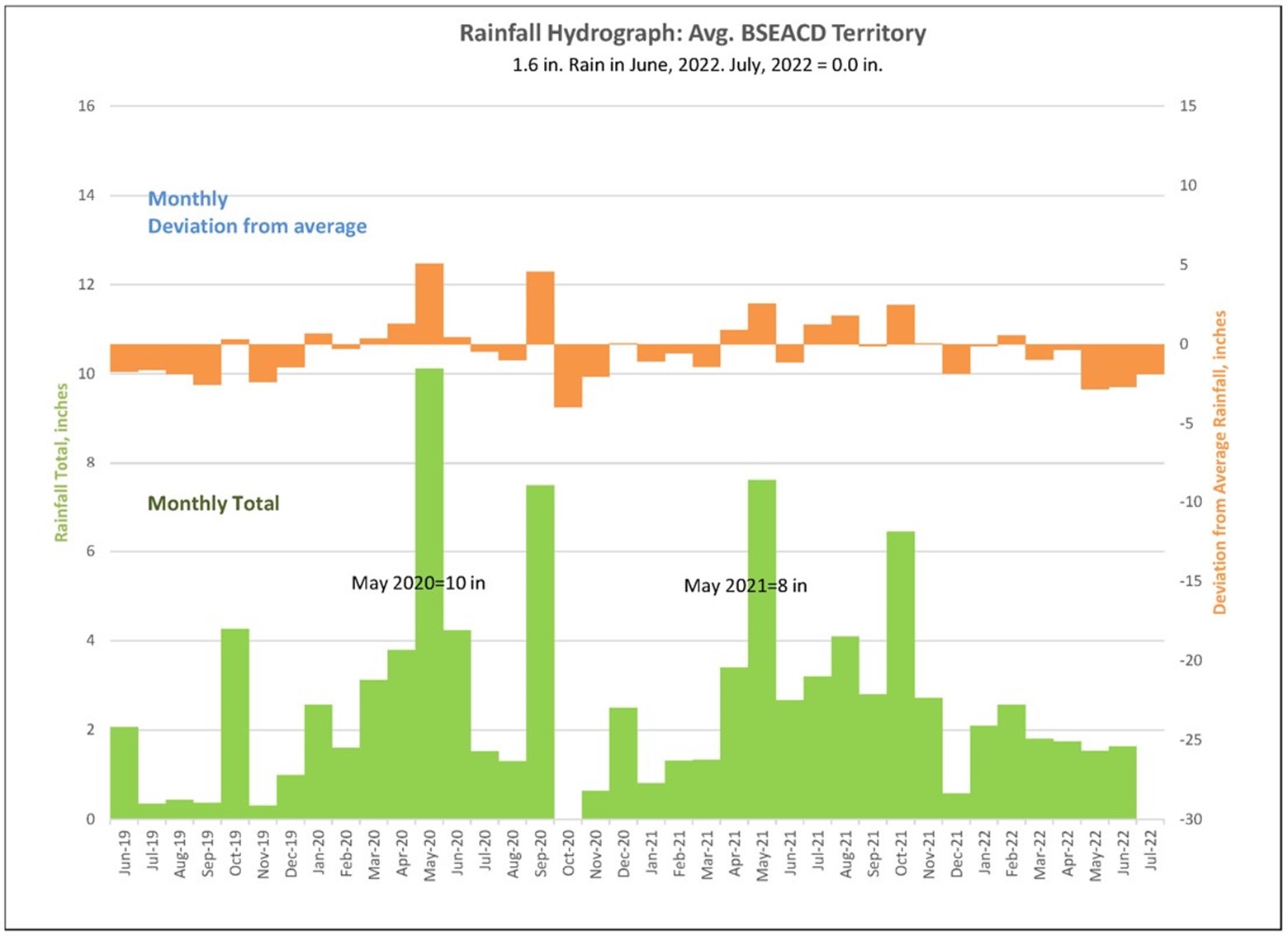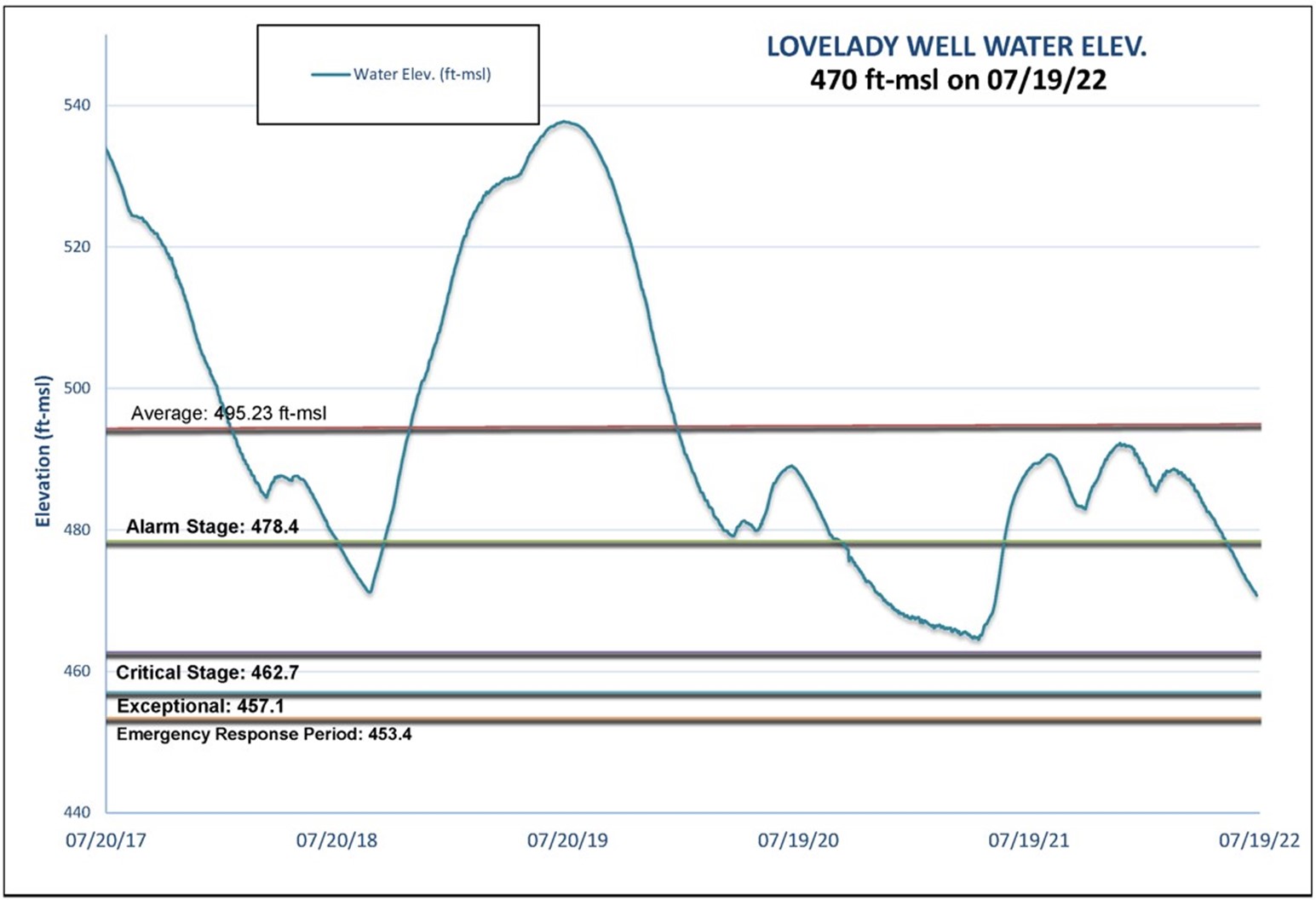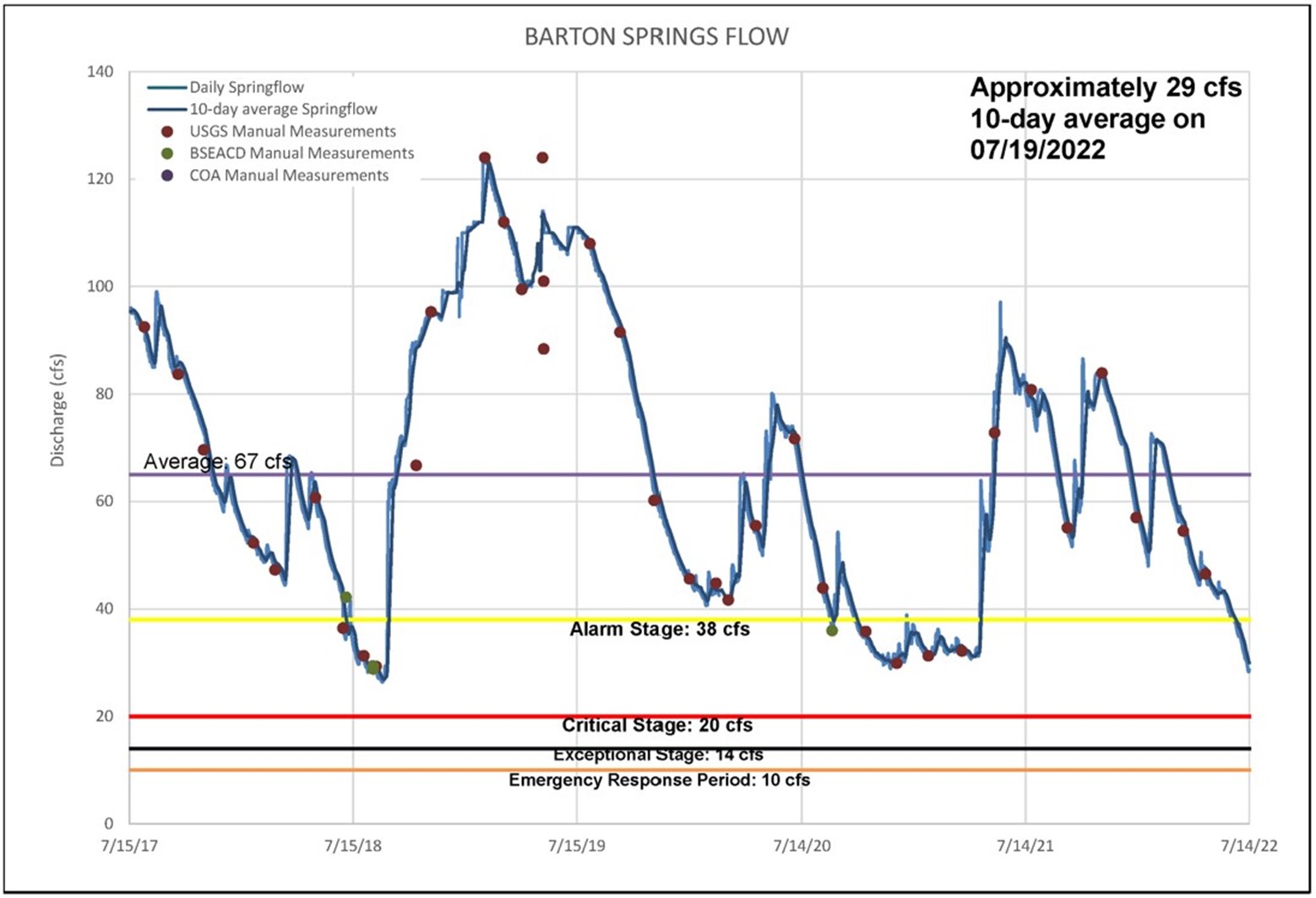|
Drought Update July 20, 2022 Drought conditions in the Texas Hill Country continue to worsen as we have received an average of 11.4 inches – 6 inches behind annual average rainfall – from January through mid-July (Figure 1). Only the month of February recorded above average rainfall. Water levels in the Edwards began to decline on March 11. Trinity levels also began to decline in early April. Falling trends in both aquifers continue. |
|
|
La Nina persists and has high probability to remain with us into Fall and early winter. This means that we are predicted to receive below average rainfall and above average heat through the summer and into the winter. May and June, which are historically the wettest months of the year in Central Texas, were both way below their historical monthly average (-2.8 & -2.7 respectively). In fact, both May and June 2022 clocked in as the warmest on record for Austin. On July 19, the Lovelady well (Figure 2) had a level of 470.2 ft msl, 8.2 ft below the trigger level for Stage 2 Drought. Lovelady crossed under its trigger on May 26. |
|
|
On July 19, Barton Springs (Figure 3) was flowing at 29 cfs (10-day average), 9 cfs below the Stage 2 Drought trigger point of 38 cfs. Barton Springs crossed under the Stage 2 Drought trigger in late June. USGS and BSEACD staff continue to make discharge measurements to ensure accurate stage-discharge real-time reporting. |
|
|
Aquifer science staff are closely monitoring ongoing drought conditions in both the Edwards and Trinity Aquifers. Historic hydrograph data (Figure 4) show that the 2022 drought began with aquifer levels in some portions of the Trinity already approaching historic lows. If drought conditions worsen in the coming months, levels could drop well below those historic lows. This has potential for widespread negative impacts to domestic and non-exempt wells, and reduction of Trinity spring flows in the Blanco River Basin. |
|
|
As we lean into the hottest and driest months of the year, already in Stage 2 Alarm Drought, the District encourages continued conservation. Now is a great time to brush up and double down on water conservation measures. Check out this great list of water saving tips from The Texas Water Development Board. The District could declare Stage 3 Critical Drought in the coming weeks if conditions continue to worsen. |
|
|
Meanwhile, the Texas Water Development Board’s latest Water Weekly report shows that months of below-average precipitation and above-average temperature have driven the area of the state impacted by drought to its largest value since July 2013 (Figure 5). A modest increase in drought next week will result in the largest extent of drought since January 2012. What can you do to conserve? Generally, restricting outdoor water use, including limiting landscape irrigation, pool filling and refilling, and non-essential water use such as water fountains, are easy ways to conserve water. It’s also best to only water your lawns once a week during the early morning hours. You can find more conservation tips for both indoor and outdoor conservation here. The District recommends that both exempt and permitted well owners follow these conservation tips. For additional information on groundwater wells, please take a look at the District’s Well Owner Guide. If you have questions about your well, please contact us at 512-282-8441. We encourage you to call or visit our office (1124 Regal Row, Austin, TX) during office hours (8 a.m. to 5 p.m.) to review our groundwater management process, receive information about the drought, or if you need assistance with other groundwater related matters. Check out our newly created drought information page. We will frequently update this page. Other useful links: BSEACD is a groundwater conservation district charged by the Texas Legislature to preserve, conserve, and protect the aquifers and groundwater resources within its jurisdiction, which includes parts of three central Texas counties. It is governed by a Board of five elected directors and staffed with hydrogeologists, groundwater regulatory compliance specialists, environmental educators, geospatial systems specialists, and administrative support personnel. |





